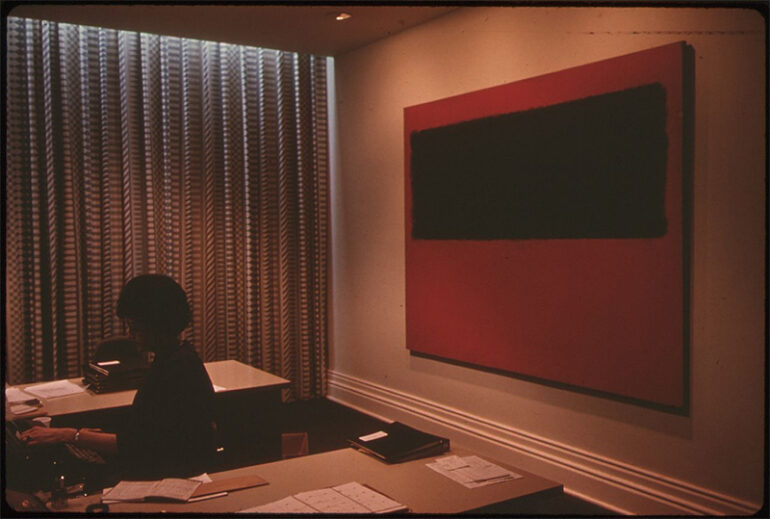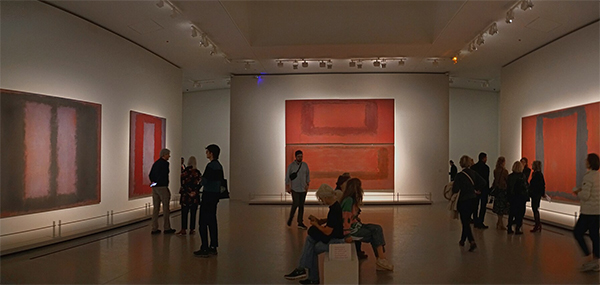With his creative use of color and abstraction, Mark Rothko—a fundamental player in the development of modern art—changed the field of painting. Originally from Latvia and then living in the United States, Rothko’s artistic perspective was influenced by a junction of historical events and personal experience. His work invited visitors into a world where vision and feeling entwine, therefore transcending conventional limits. Through giving color’s expressive power top priority, he created a language that challenges viewers to explore their own emotions and thoughts over the great width of his canvases, therefore resonating with the human experience.
The Life and Influences of Mark Rothko
Rothko, who was born in Dvinsk, Latvia, in 1903, came to the United States early on and started his creative path here. Inspired by several styles, including Surrealism and Expressionism, he aimed to communicate strong emotional experiences using form and color. Early on, his paintings were distinguished by figurative aspects; yet, he eventually moved to the abstract form that marked his career. The turbulent circumstances of his life—personal challenges and the effects of World War II—shaped his view of art as a vehicle for investigating existential concerns, which finally resulted in his original approach to color field painting.
Exploring Rothko’s Color Field Paintings
Big, dazzling color blocks in Rothko’s color field paintings arouse strong emotional reactions. Many times featuring smooth edges and subdued gradations, these canvases create movement and depth. The artist thought that color could convey emotions of happiness, melancholy, or introspection even across language. Eliminating representational shapes let viewers interact with the core of color itself, therefore promoting a contemplative experience. Each work is a different trip into the depths of feeling and perception as Rothko’s investigation of spirituality and the human condition reflected often in the interaction of colors.
Minimalism in Rothko’s Art
Emphasizing simplicity and clarity in his compositions, Rothko’s method captures the ideas of minimalism. Eliminating extraneous details, he concentrated on the emotional impact of color and form. The great range of colors invites viewers to let themselves be completely submerged in the experience. Because every piece invites reflection and introspection, this reductionist approach lets the spectator and the artwork have a close relationship. The intentional use of color and space reveals a wish to convey strong emotions, therefore proving that simplicity may create rich emotional landscapes without the need for detailed images.
Emotion and Experience in Rothko’s Abstract Landscapes
Rothko’s abstract paintings’ emotional depth compels spectators to participate viscerally. With his use of color and form, he seeks to arouse a range of emotions from peace to conflict transcending simple aesthetics. Every canvas invites personal introspection and helps people to face their own feelings and experiences. Because the layers of color speak to their own memories and emotions, the immersive quality of his work frequently helps viewers to feel a strong connection to the human experience. This capacity to produce such strong emotional reactions emphasizes Rothko’s competence in producing work meant for the soul.
Mark Rothko’s artistic legacy resides in his great capacity to relate to the emotional terrain of the observer as much as in his creative use of color and form. His work invites reflection and individual interpretation, therefore transcending conventional limitations. Rothko established a unique conversation between art and audience by reducing complicated emotions into straightforward but strong compositions, therefore promoting a greater knowledge of the human experience. This ongoing resonance confirms the ageless significance of his investigation of emotion through abstraction.
Photo Attribution:
1st & featured image by https://commons.wikimedia.org/wiki/Category:Mark_Rothko#/media/File:INTERIOR_OF_CUMMINS_CORPORATE_OFFICE,_BUILT_IN_1972_-_NARA_-_546486.jpg

